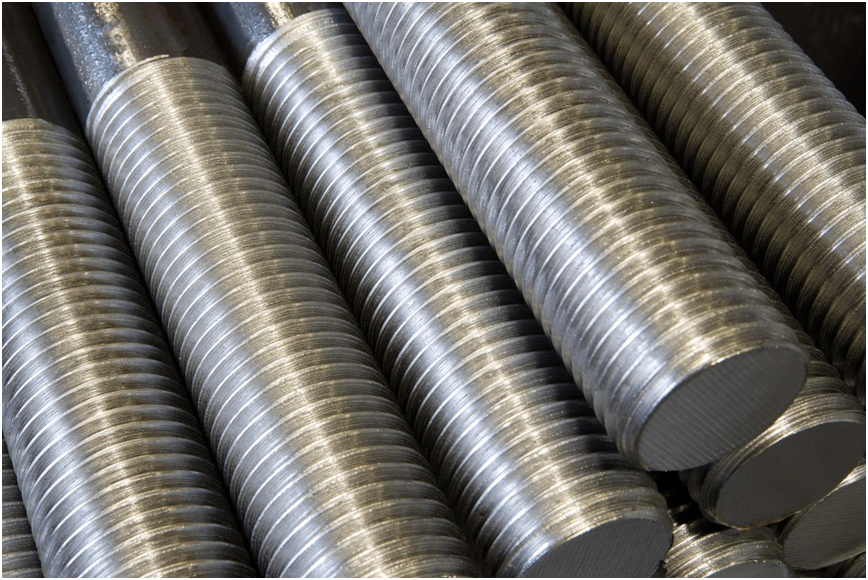The first quarter of 2025 has passed, and the annual reports of major steel enterprises for 2024 have been released one after another. According to incomplete statistics, as of March 31, 11 listed steel enterprises have released their annual reports for 2024. The total net profit amounts to 12.953 billion yuan, showing a year-on-year decrease of 2.80%; the total revenue is 579.52 billion yuan, representing a year-on-year decline of 10.98%. In addition, according to the data released by the National Bureau of Statistics, from January to February, the total profit of the ferrous metal smelting and rolling processing industry was -1.55 billion yuan. Evidently, the "cold spell" in the steel industry persists, and the development of the steel industry still faces numerous challenges.
Image Source:699pic.com
Analysis of the International Situation
The latest data from the Steel Committee of the Organisation for Economic Co-operation and Development (OECD) shows that by 2027, the global surplus of steel production capacity is expected to increase from 602 million tons in 2024 to 721 million tons. Even for highly competitive steel manufacturers, they are faced with enormous survival pressures. The OECD predicts that from 2025 to 2027, the global steel production capacity will see an increase of 165 million tons, mainly driven by the cross-border investments of Chinese steel enterprises. However, due to the sharp decline in China's construction industry, the steel demand is only expected to grow moderately in the medium term.
The report states that the persistent issue of overcapacity is also reducing the profitability of the steel industry and decreasing the capital available for investing in new technologies, thus impeding the decarbonization process. Due to the overcapacity of steel production and a surge in low-priced steel exports, the crisis in the global steel industry has intensified. In 2024, steel prices and profitability dropped to historical lows, disrupting the international market and fueling the intensification of trade protectionism.
As some economies rapidly expand their steelmaking production capacity, non-market factors remain a major concern. The OECD Steel Committee has indicated that if the countries contributing to overcapacity do not change their policies, the challenges faced by the global steel industry may worsen. The committee calls for accelerating efforts to address the root causes of the crisis and making contributions to international solutions. After the release of the OECD document, the European Steel Association reiterated that the European Union urgently needs strict and effective safeguard measures to ensure the survival of the steel industry.
Analysis of the Situation in China
Judging from the production and consumption data, in the first quarter of 2025, the pattern of oversupply in the steel industry in China was obvious. It is reported that from January to March 2025, the output of crude steel reached as high as 259.33 million tons, an increase of 1.55 million tons compared with the same period last year, a year-on-year growth of 0.6%. However, the apparent consumption was 230.30 million tons, 2.86 million tons lower than the same period last year, a year-on-year decrease of 1.2%, which was lower than that of last year.
In terms of raw materials, the highly monopolistic prices of imported iron ore are still the prime culprit eroding the profits of steel enterprises. Since the beginning of this year, the prices of imported iron ore have continued to fluctuate at a high level, while the prices of coking coal have been continuously declining. The data shows that the average price of coking coal in the first quarter decreased by 38% year-on-year, while the average price of iron ore only decreased by 21% year-on-year.
In terms of steel exports, against the backdrop of significant uncertainties in global trade caused by the US tariff measures, the effect of "rushing to export" in China is obvious. In March, China's steel export volume exceeded 10 million tons again, reaching as high as 10.456 million tons, an increase of 5.7% year-on-year, ranking the fifth highest in history. The data shows that from January to March, the cumulative export volume of steel was 27.429 million tons, a year-on-year increase of 6.3%, which was better than the same period last year.
The inventory data reflects the weak market demand. Through the analysis of historical data, the apparent consumption of steel in China has been increasing year by year since 2016. After reaching its peak in 2020, it has been decreasing year by year for the past five years. In 2024, China's crude steel output decreased by 17.38 million tons year-on-year, a decline of 1.7%; the apparent consumption of crude steel decreased by 43.98 million tons year-on-year, a decline of 4.7%. Overall, the strong supply and weak demand remain the main contradiction at present.



